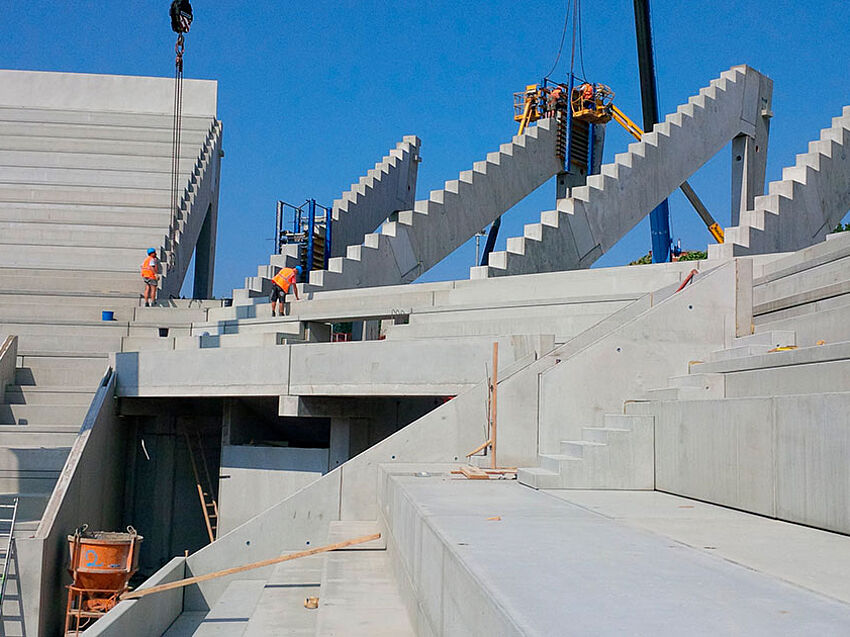Modular Construction as a Solution for Sustainable Building Projects
Prefabrication and modular construction have been touted for years as the answers to the shortage of skilled workers and increasing time pressures. Added to this is the increased demand for affordable housing and the need for a more conscious use of resources. The manufacturing-style approach brings automation to construction and offers many benefits in terms of quality, speed, and cost-efficiency. In recent years, this has attracted both interest and investment to help companies deliver more for less. Therefore, it is worth considering what the precast process basically looks like and what the crucial success factors are in precast projects.
From swift data import to efficient precast design
Importing data via the IFC interface into the precast BIM software is a typical first step in precast projects. However, the quality of the models to be imported often varies. In order to raise the quality of the data to the level required for precast design, the software used should ideally support the import through automated processes. ALLPLAN with its dedicated workflows for precast design and detailing, for example, makes improvements to the geometric information and adds necessary attributes, such as materials, specifications for reinforcement, or for fixtures.
After the imported and already optimized architectural model is refined into a precast model, the actual modeling of the precast elements begins. In practice, this includes the precast element design as well as the design of the fixtures and the reinforcement. Innovative solutions simplify and accelerate precast design through numerous automated workflows. Examples include the automated generation of reinforcement or the automated creation of all shop drawings in ALLPLAN.
3D stacking facilitates work preparation
The data is then transferred to work preparation software, such as Tim from ALLPLAN, where, among other things, rule-based quality checks and the planning of assembly, transport, and production take place. Tim generates the data for downstream systems such as ERP, manufacturing execution systems (MES), or control tools such as Solibri. Specifically, Tim exports reports, shop drawings, general plans, 3D models, and commercial information.
Precise production data and safe assembly on the construction site
The IFC format is also perfect for the production of precast elements. The uniform data standard, IFC4precast, was developed specifically for precast concrete projects. This ensures data consistency and enables seamless collaboration.
Once the precast elements have been produced, they are transported to the construction site and the construction work is carried out. Mobile applications such as mTim simplify and accelerate the processes on the construction site. The assembly team always has the model at hand and can clearly assign which element needs to be placed where. The app sends any defects to the head office, which immediately takes care of post-production issues, if necessary. After successful assembly, the precast element is scanned to inform the office about the current status and thus give the start signal for billing.
Automated workflows are key to success in precast
With an understanding of the precast process, it is clear that automated workflows are a key success factor. Solutions such as ALLPLAN Precast, which offer highly automated workflows for design and production of walls and slabs enable engineers to raise precast projects to a new level of precision and efficiency. In particular, automated workflows enable higher productivity, better data quality, and seamless collaboration between all project participants.
Find out more about how efficiency in precast projects can be maximized in this video:




